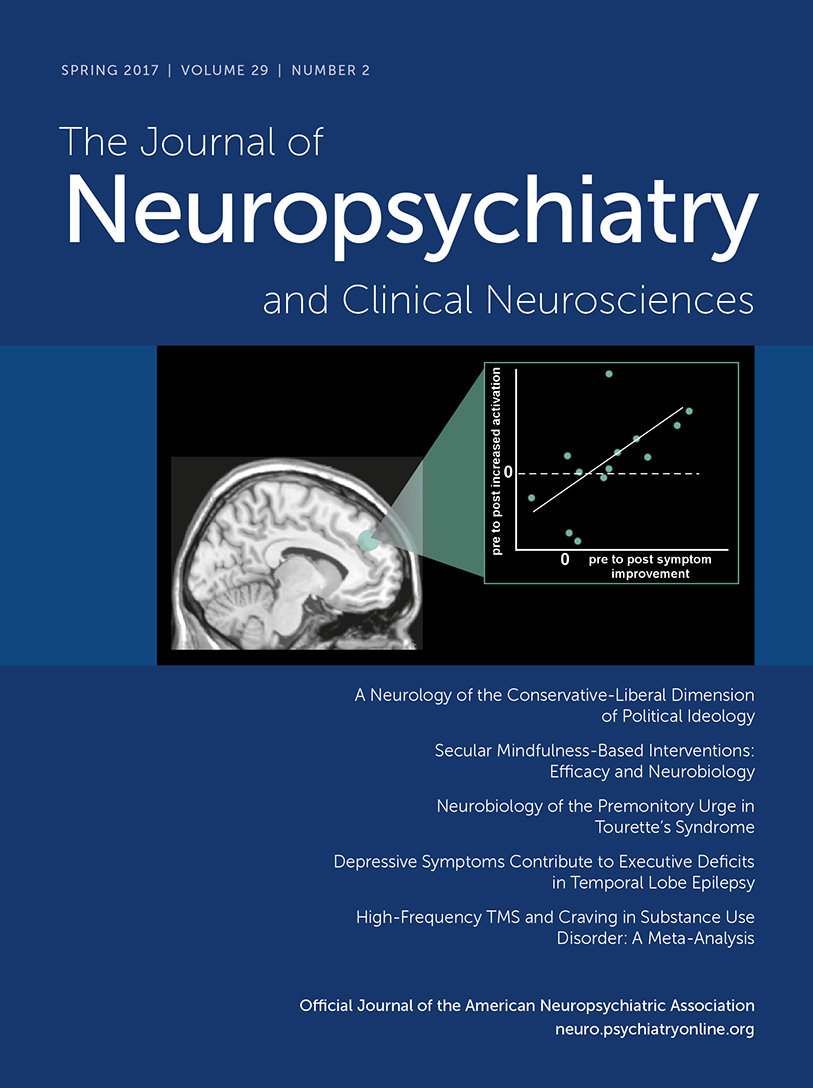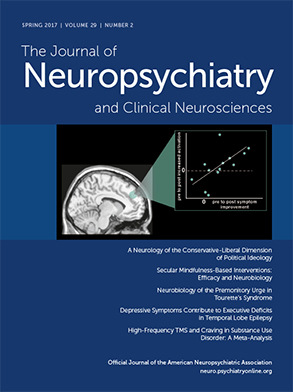Advances in clinical neuroscience over the last three decades have afforded unprecedented and remarkable insights into the neural underpinnings of elementary cognitive, emotional, behavioral, sensory, and motor functions (
1). The neuropsychiatry that emerges by integrating these advances with contemporaneous developments in evolutionary science, psychology, environmental and social sciences, and neurophilosophy creates frameworks for the investigation of the neuroscience of quintessentially human experiences and endeavors, including, among many others, imagination (
2,
3), creativity (
4–
6), humor (
7,
8), love (
9–
11), violence (
12–
14), religion and spirituality (
15–
17), law and justice (
18–
20), economics (
21–
23), and politics (
24,
25).
In his
Journal of Neuropsychiatry and Clinical Neurosciences article, clinician-neuroscientist Mario Mendez, M.D., Ph.D., extends these investigations with his timely, thoughtful, and thought-provoking proposal for a neurology of the conservative-liberal dimension of political ideology (
26). This exemplary work of integrative scholarship reviews personality, evolutionary, genetic, and cognitive influences on political conservatism-liberalism. This work acknowledges the complex foundations of individual political opinions and ideology, including at least socioeconomic factors, culture and subculture (including family and peer groups), experience-based attributions of meaning, and rational consideration of political theories and their applications. At the same time, and consistent with an essentially physicalist notion of mind, he presents evidence that individual political beliefs reflect individual differences in brain function and structure.
Differences between people at opposing ends of the political conservative-liberal continuum, as one might expect intuitively, are found in cognitive style, personality traits, social and moral judgments, emotionality, and responsiveness to the emotions of others. Dr. Mendez makes clear, however, that these are not merely phenomenologic differences between people with different political leanings but ones informed by genetic, biophysical, neurophysiologic, and neuroimaging findings characteristic of those leanings.
These phenomenologic-neurobiological associations form the foundation for a neurology of the conservative-liberal dimension of political ideation, which Dr. Mendez discusses in terms of a right anterior hemisphere network. While necessarily bihemispheric, core nodes in this network include, at least, the right ventromedial prefrontal cortex, amygdala, anterior insula, dorsomedial prefrontal cortex, and dorsolateral prefrontal cortex. This network functions in a manner that biases information processing toward heightened sensitivity and reactivity to negative stimuli, threat, and disgust. It also heightens and sustains attention to negative aspects of environmental stimuli, especially those that are novel to or different from the individual processing them, and facilitates the development of memory for those stimuli. The phenomenologic product of this right-hemisphere bias in information processing is conservative thought, emotion, and behavior—including political conservatism—that, Dr. Mendez suggests, seeks to place a brake on change, maintain stability, and protect the status quo. The studies summarized in his review also suggest that information processing and response biases that are more characteristically “liberal” tend to engage the left hemisphere and, as he suggests, may be consistent with the left hemisphere’s propensity for “approach” behavior.
In many respects, the proposal for a neurology of the conservative-liberal dimension of political ideology offered by Dr. Mendez is one of a lateralization of function (i.e., hemispheric specialization). This is a recurring theme in the neurology of behavior, not only with respect to elementary neurobehavioral functions like handedness, language, memory, praxis, and visuospatial function, but also one echoed in many of the aforementioned articles describing the neuropsychiatry of other highly evolved experiences and endeavors like creativity, humor, spirituality, and law and justice. From our perspective, Dr. Mendez’ proposal is akin to a description of “political handedness,” with politically related information processing and response biases that are strongly lateralized to the right hemisphere producing a tendency toward political conservatism and those that are strongly lateralized to the left hemisphere producing a tendency toward political liberalism—and with less strong lateralization of function placing one between the ends of the political conservative-liberal continuum.
Whether such lateralization tends, as Dr. Mendez suggests, toward a right conservative complex or instead is more evenly distributed between the cerebral hemispheres in most cases remains to be determined. The unusual observation of reduced political conservatism (or, alternatively, a “liberal shift,” as Dr. Mendez describes it) in some, but not all, patients with right anterior frontal degeneration or injury may reveal preservation of political information processing functions of the left anterior frontal homologs of the right hemisphere “conservative complex.”
Informed by the remarkable synthesis of the literature offered by Dr. Mendez, testable hypotheses of this neurology of the conservative-liberal dimension of political ideology are readily generated. At this stage of this field’s development, especially in the contentious political times in which we live, we encourage readers to consider this work carefully and remain circumspect about its implications. Further research is needed to develop and refine the neurology of political ideology before using it to interpret our own politics and those of our fellow citizens.

